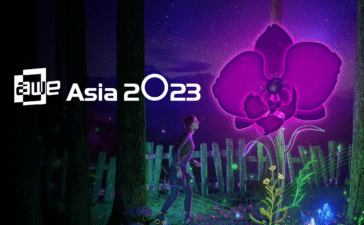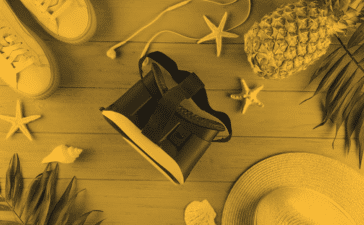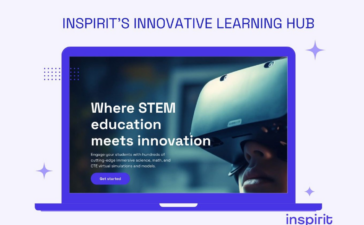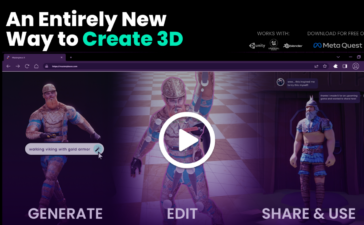The last three years may feel as though they’ve gone by pretty quickly. A few short years ago, we were seeing an explosion of interest and production in XR theater and live virtual entertainment. The pandemic meant that a lot of theaters were empty, creating a strong need for audiences and entertainers alike.
Now it’s 2023. Theaters are open again. But, that doesn’t mean that XR theater has gone anywhere. Far from being a temporary fix to string us through an isolated event, live VR entertainment is stronger than ever. It remains a way to explore new avenues of storytelling and even bring new audiences into traditional entertainment venues.
Understanding Immersive Theater
Before we dive in, a quick clarifying note may be required. While some readers will hopefully come from a theater background, most readers are likely more familiar with XR terminology so one particular term might be confusing.
When ARPost describes an experience as “immersive,” we’re usually talking about a 3D virtual environment that is spatially explored either by physical movement in augmented or mixed reality, or through spatial navigation in virtual reality. However, XR does not have a monopoly on the word.
“Immersive theater” is a term from the live entertainment world that far predates XR and XR theater. In this form of immersive theater, participants converse with actors, manipulate props, and physically move through sets that might take up an entire building. While the pandemic played a part in the growth of XR theater, its roots are in immersive theater.
“Due to our familiarity with the genre of immersive theatre, and some of our team members had prior experience performing in and being audience members in VR theatre shows, the transition from in real life (IRL) to VR was very natural,” Ferryman Collective founding member Stephen Butchko told ARPost.
Ferryman Collective, one of the premiere production companies in XR theater, was founded during the pandemic but its founding members had already been performing immersive theater in live venues for years. In fact, one of Ferryman Collective’s first major productions, Severance Theory: Welcome to Respite, began life as an in-person immersive theater production.
From Gaming to XR Theater
The Under Presents, released in 2019, might be the first major piece of XR theater. Tender Claws, the development studio behind the production, had been exploring innovative digital productions and engagements for four years already, but The Under Presents is where our story begins.
The experience, built as a game that sometimes featured live actors, introduced countless viewers to live XR theater. It also inspired other artists at a time when the theater community was in dire need of something new and different.
“Born out of the Pandemic”
“Ferryman Collective was born out of the pandemic and brought together by the magic of The Under Presents, or ‘TUP’, as we affectionately call it,” Ferryman Collective founding member Deirdre Lyons told ARPost. “The pandemic shut everything down in 2020 except for TUP, as people performed and participated in it from home.”
In 2019, Lyons was one of the Tender Claw’s VR actors – a job that she still holds while also producing, directing, and acting in productions by Ferryman Collective. A number of members of Ferryman Collective met while working on TUP.
The live show was only supposed to run for three months but extended the run due to its high popularity. The live component of the app and game was eventually closed, leaving actors free to work on other projects, with Tender Claws’ second major XR theater production, Tempest, coming out the following year.
Ferryman Collective’s first production, PARA, a horror story about a dubious AI startup, came out in the autumn of 2020. The show was written by Braden Roy, and was directed by Roy and Brian Tull, who had also met working on TUP. Roy also wrote Ferryman Collective’s second production, Krampusnacht, directed by Roy, Tull, and Lyons in the winter of 2020-2021.
XR Theater Meets Immersive Theater
Ferryman Collective learned a lot from PARA and Krampusnacht. The latter got the collective their first award nomination, with a run that was extended four times to keep up with interest. However, the collective’s breakout production was The Severance Theory: Welcome to Respite – an XR adaptation of a pre-pandemic live immersive theater production.
“Having experienced quiet moments of contemplation with other audience members within my experience as an actor on TUP, I knew that this medium had the potential for a profound connection,” said Lyons. “Having done some voiceover work on The Severance Theory: Welcome to Respite […] I felt this piece could be that kind of powerful experience in VR.”
Lyons reached out to the play’s creator, Lyndsie Scoggin, who had also been sidelined by the pandemic. Scoggin went from not owning a headset to writing and directing the XR theater adaptation, which took on a life of its own.
“The IRL version of [Welcome to Respite] was performed for one audience member who plays a seven-year-old kid named Alex,” Butchko told ARPost. “In the VR version, we are able to include up to nine additional audience members who are put into invisible avatars and play the alternate aspects of Alex’s personality, the Alter Egos.”
Bringing in Participants
Ferryman Collective’s approach to Welcome to Respite brings in more participants per show, but it also allows the participants to control the story as a group as each one gets a vote to determine Alex’s actions taken by the singular Alex over the course of the play.
Expanding the scale of XR theater audiences is one of the pioneering pursuits of “scrappy storyteller” Brandan Bradley. Bradley has been exploring XR since 2017 but really dove into it during the pandemic. During this time he has launched his own projects and XR theater productions and has also acted in productions by Ferryman Collective.
“The pandemic brought about this collision of my two loves: interactive media and fine arts,” Bradley told ARPost in a 2020 interview.

Bradley’s current production, NPC, brings in a group decision dynamic similar to Welcome to Respite. Bradley plays a side character in a video game that sees the main character die and turns to the audience for guidance. The audience is four “on-stage” participants that interact with him directly, and a larger “seated audience” that watches the action unfold.
Expanding the audience
Splitting the audience like this does a number of things for Bradley. Traditional immersive theater experiences might only have the participating audience – and most XR theater still works that way. From a strictly box office perspective, bringing in the “seated audience” allows Bradley to sell significantly more tickets per performance.
There’s also an audience accommodation aspect. While the “seated audience” might be interested in seeing a story that is shaped by the audience, shaping the story themselves might not be their cup of tea. Further, the “seated audience” can join on more widely affordable and available devices – including a web browser.
“There is a large contingency of the audience that enjoys a more passive role – like a Twitch chat come to life,” Bradley told me over coffee at AWE. “My mom, who will never put on goggles, is willing to join on the keyboard.”
Bradley’s OnBoardXR – a sort of workshop and venue for XR entertainers to begin developing and testing live performances – uses a similar ticketing model. In a lobby, audience members choose different avatars to signal to the actors the degree to which they feel comfortable participating.
NPC and OnBoardXR, take place on-browser and can be joined in headset, on a desktop, or even on a mobile phone. Ferryman Collective performs in VRChat for similar options. This is a departure from Tender Claws’ VR-only productions.
“All of us would love to be The Under Presents […] but the price point is outrageous and the timetable is untenable for someone who just wants to keep producing […] we’re kind of ‘Off Broadway,’” said Bradley. “This is the balance that we’re all doing. There are things we would all love to do with more robust tools […] right now it’s more important to have more participants.”
Exploring Affordances
Anytime that anything is brought into virtual reality, there are benefits and barriers. Live theater is no different. Set and prop design, construction, and storage can be a lot easier. This to the point that no XR production ever need be permanently ended. A show can be revived at any time because everything exists as files as opposed to physical objects that must be stored.
However, physicality and expression can be a trade-off. A character may be fantastically designed for VR, but controlling it and expressing through it isn’t always easy – even with special avatars with controller-activated expressions.
“Emotions within the scene must be conveyed through the actor’s voice and sometimes stylized gestures[…],” said Butchko. “Things that we cannot do easily or convincingly are eat, drink, and lay down. Those were all found in the IRL production of [Welcome to Respite], but could not be used in the VR version due to technical limitations.”
Further, if you’re still comparing XR theater with a typical play instead of immersive theater, there are a few more details that you might have missed. Some in-person immersive theater involves physical contact between actors and participants, or at least involves participants physically interacting with sets and props.
“Not all immersive shows have physical actor-audience contact but there’s still the physicality of the structure and props that can’t be replicated without building a physical space,” Tull told ARPost. “Smell and taste are noticed less, though the potpourri of an old mansion or a gin and tonic at a seedy speakeasy go a long way in completing the illusion.”
Tull further commented that, even when “physical actor-audience contact” is involved, “the visual immersion of virtual reality can almost replicate the intimacy of actual touch.” I certainly found this to be the case.
Exploring Emotion
As a participant in Ferryman Collective’s Gumball Dreams, an actor reached out and virtually put his hand on my chest. If an actor had physically done this in an IRL production, I dare say that this would have made me immensely uncomfortable in the worst way. But, in VR, this came across as intended – a moving intimate gesture between characters in a story.
Gumball Dreams has an amusing name and a brightly colored and stylized virtual world. However, the actual story is an incredibly moving exploration of mortality and consciousness. Similar themes exist in NPC, while Welcome to Respite explores the experience of psychological disorders. What makes XR theater so conducive to these heavy topics?
“At a media level, when you’re inviting the kind of immersion that VR affords, you want to do more than just comedy,” said Bradley. “There is an emotional intimacy that we experience in VR that we haven’t experienced anywhere else and don’t have words for and that’s the next degree of the storytelling experience.”
In this year’s AWE panel discussion on “XR Entertainment: The Next Generation of Movie Makers and Performers”, Ferryman Collective performer and producer Whitton Frank gave a description of XR theater that also explains the draw that it has to audiences as well as entertainers.
“You are given a character and you are a part of the play […] you’re having emotional experiences with another human being which is why, I think, people get excited about this,” said Frank. “That is the way forward – to show people the world in a way that they haven’t seen it before.”
Find an XR Theater Experience
So, how do you know when and which XR theater experiences are available? It’s still a pretty niche field, but it’s close-knit. Start out by following groups like Tender Claws, OnBoardXR, and Ferryman Collective. Then (before or after the show), talk to the other audience members. Some will likely be new to it themselves, but others will be able to point you in the right direction.
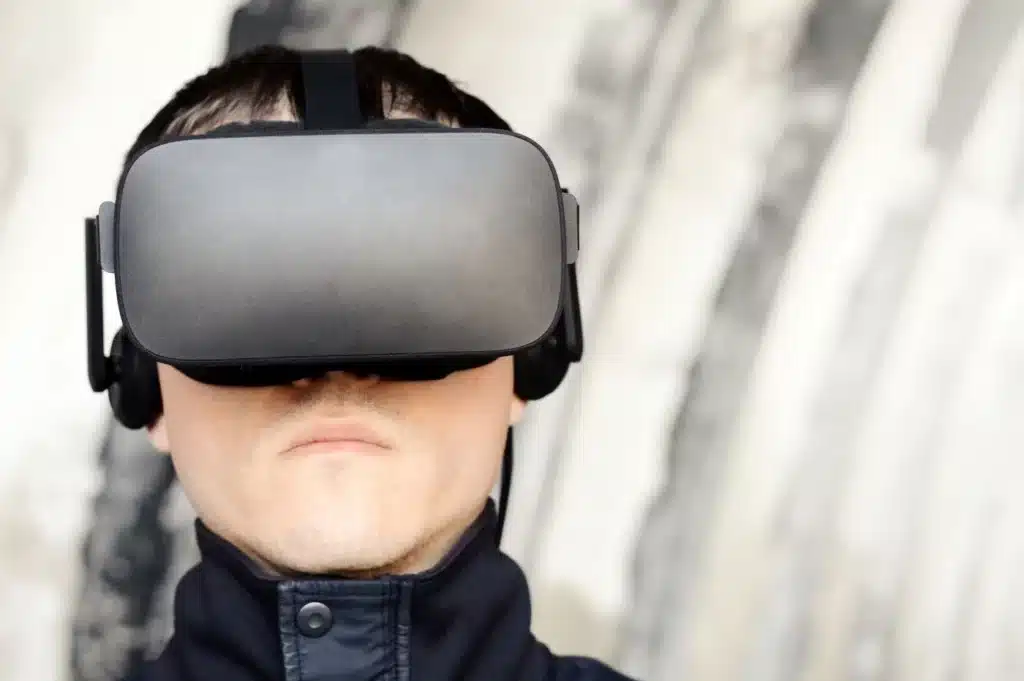
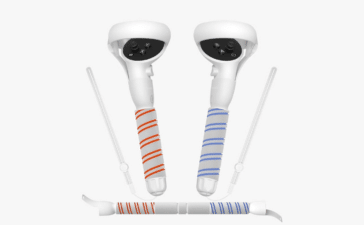


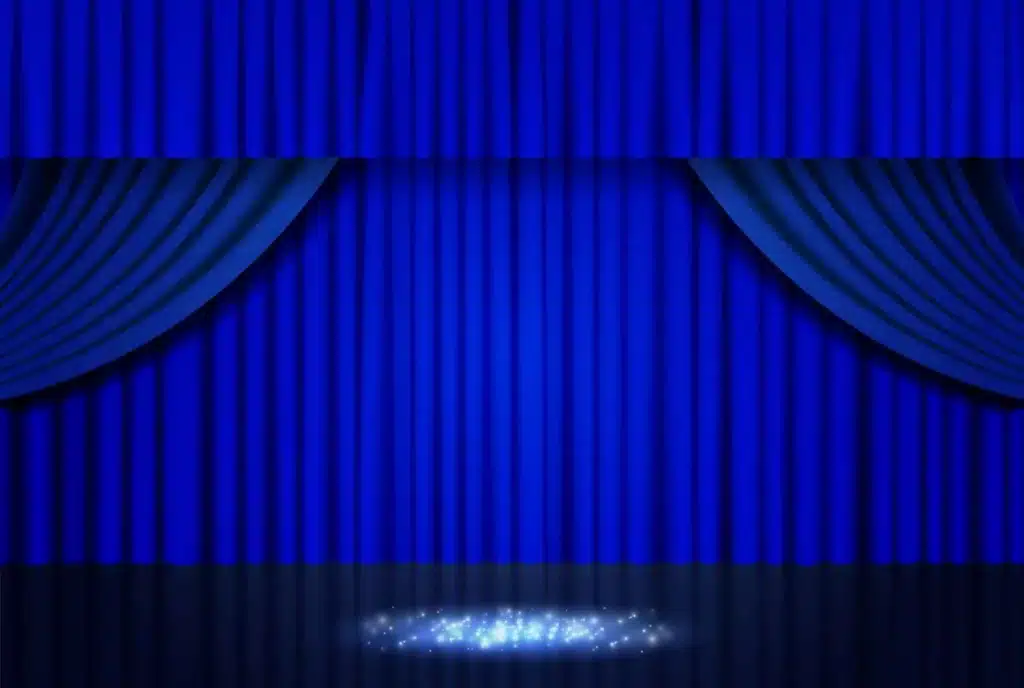


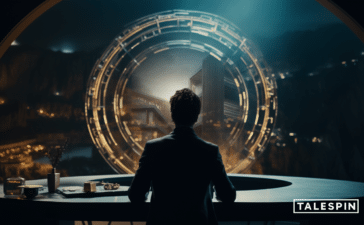


![highlighting-the-top-3-xr-trends-of-2023-[insights-from-this-year’s-awe-usa]](https://theverysoon.com/wp-content/uploads/2023/08/79832-highlighting-the-top-3-xr-trends-of-2023-insights-from-this-years-awe-usa-1024x576.webp)
![Highlighting the Top 3 XR Trends of 2023 [Insights From This Year's AWE USA] ThinkReality VRX](https://assets.arpost.co/wp-content/uploads/2023/07/27105020/ThinkReality-VRX-jpg.webp)
![Highlighting the Top 3 XR Trends of 2023 [Insights From This Year's AWE USA] Laser-tag-inspired Laser Limbo](https://assets.arpost.co/wp-content/uploads/2023/07/27104947/Laser-tag-inspired-Laser-Limbo-jpg.webp)
![Highlighting the Top 3 XR Trends of 2023 [Insights From This Year's AWE USA] Tilt Five](https://assets.arpost.co/wp-content/uploads/2023/07/27105033/Tilt-Five-jpg.webp)
![Highlighting the Top 3 XR Trends of 2023 [Insights From This Year's AWE USA] Fluid Reality](https://assets.arpost.co/wp-content/uploads/2023/07/27104854/Fluid-Reality.png)
![Highlighting the Top 3 XR Trends of 2023 [Insights From This Year's AWE USA] OWO Haptic Vest](https://assets.arpost.co/wp-content/uploads/2023/07/27105006/OWO-Haptic-Vest-jpg.webp)
![Highlighting the Top 3 XR Trends of 2023 [Insights From This Year's AWE USA] Ant Display demonstrating their prototypes](https://assets.arpost.co/wp-content/uploads/2023/07/27104738/Ant-Display-demonstrating-their-prototypes-jpg.webp)
![Highlighting the Top 3 XR Trends of 2023 [Insights From This Year's AWE USA] CREAL’s LFD headset](https://assets.arpost.co/wp-content/uploads/2023/07/27104815/CREALs-LFD-headset.png)
![Highlighting the Top 3 XR Trends of 2023 [Insights From This Year's AWE USA] Hypervision](https://assets.arpost.co/wp-content/uploads/2023/07/27104923/Hypervision-jpg.webp)

